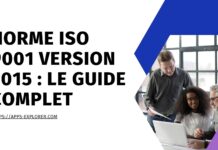15 tendances managériales à suivre en 2025
À l'heure où les entreprises doivent naviguer dans un environnement complexe et en constante évolution, les dirigeants doivent s'adapter et innover pour rester compétitifs....
Norme ISO 9001 Version 2015 : Le Guide Complet
Téléchargez le PDF de la norme ISO 9001 version 2015 et découvrez les exigences du système de management de la qualité.
Comprendre la valeur ajoutée en finance
Découvrez comment la valeur ajoutée est définie et utilisée pour mesurer la performance financière d'une entreprise.
L’impact de l’automatisation sur la production
Analyse de l'impact de l'automatisation sur les processus de production et la performance des entreprises.
Gestion des flux de production en entreprise
Découvrez comment gérer efficacement les flux de production pour améliorer les performances de l'entreprise.
Techniques avancées de gestion de la production
Explorez des techniques avancées pour une gestion efficace de la production dans les entreprises.
Le rôle des entrepôts dans la gestion des stocks
Explorez comment les entrepôts jouent un rôle clé dans l'efficacité de la gestion des stocks et la logistique des entreprises.
Les Tendances du Marketing Mobile pour les Entreprises en 2025
Restez à la pointe du marketing mobile avec les tendances de 2024 pour les entreprises.
Comment Améliorer la Qualité de Vie au Travail pour les Salariés
Découvrez les stratégies pour améliorer la qualité de vie des salariés et augmenter leur productivité au sein de l'entreprise.
Le rôle de l’ingénierie dans l’amélioration de la production
L'ingénierie joue un rôle clé dans l'amélioration des processus de production et l'efficacité globale des entreprises.




